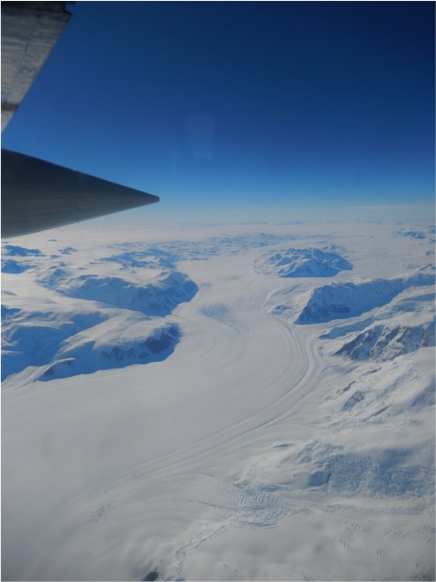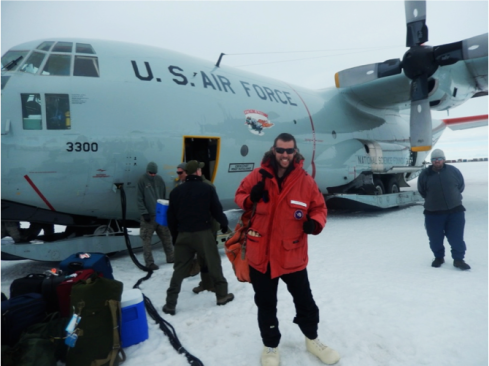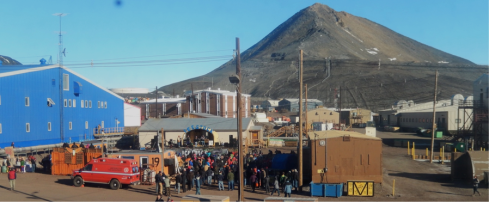I left my house in Fort Collins on Christmas Eve, 2013, heading south all the way to Antarctica. A few delays later I finally arrived in Christchurch, New Zealand at 1am – 8 hours before my flight to the ice was scheduled – to join the other researchers on the soils team from Virginia Tech, Brigham Young University and Dartmouth College. After a short sleep and a stop to get my field clothing at the United States Antarctic Program Clothing Distribution Center I was able to make the flight to the ice as planned on the 28 Dec. It was a beautiful clear day and through the small windows on the C-130 Hercules airplane flown by the US National Air Guard from NY, we were treated to some great views of the continent as we flew in. Ice sheets, mountains chains and snowy valleys stretch out to the horizon in every direction and it’s so white you need sunglasses to avoid getting bedazzled. When we finally landed at around 9pm, it had been 82 hours (about 3.5 days) since I had left Fort Collins.
The days following arrival at McMurdo Station have been very busy with arrival briefings, training sessions and preparing the lab for our research work. We (soil biologists, soil biogeochemists including students, post docs and Principal Investigators) are the first of the Soils Team (also known as Wormherders, but more on that later) of the McMurdo LTER to arrive. The Soils team has a lot of research planned for the coming weeks and need to hit the ground running. The weather has been fantastic so far, but things can change quickly, so we plan to make hay while the sun shines! Our first field trip will be to Many Glaciers Pond in Taylor Valley, the site of the P3 (pulse press project) experiment. In this experiment our group will pump water from a nearby pond to a holding tank and release it above a hill slope, mimicking a subsurface melt event. Projections of climate change include the possibility that the Dry Valleys will experience an increase in the frequency and magnitude of warming events in the future. The P3 experiment consists of three treatments; one plot that will receive water every year; one that will only receive water every 3 years; and one un-watered (control). But before applying any water, we will sample the plots to add to two previous seasons of baseline data on soil properties and soil invertebrate diversity, abundance and composition. Nematodes are the dominant soil invertebrates in the Dry Valleys, and changes in their populations over time will indicate how increases in moisture may alter their biogeography with future melting of permafrost and glaciers.
After 3 days of work stocking a lab from scratch and planning for the next week’s research, it was time for a break. We were lucky to be able to celebrate New Year’s Even in McMurdo – because it is the best place to be on New Years Eve in Antarctica is Ice Stock. Entertainment kicked off at 6pm and featured a chili cook off and an outdoor concert with great line up of bands with something for almost everyone. The New Zealand base is not far from McMurdo so most researchers come along too. It was a little surreal to have brilliant sunshine streaming down during the New Years countdown and it was definitely the coldest New Years I’ve ever had, but also one of the best!







1 comment
Comments feed for this article
January 3, 2014 at 5:27 am
Kevin Bentler
Hi neighbor. Glad you made it safe and sound. Happy New Year!